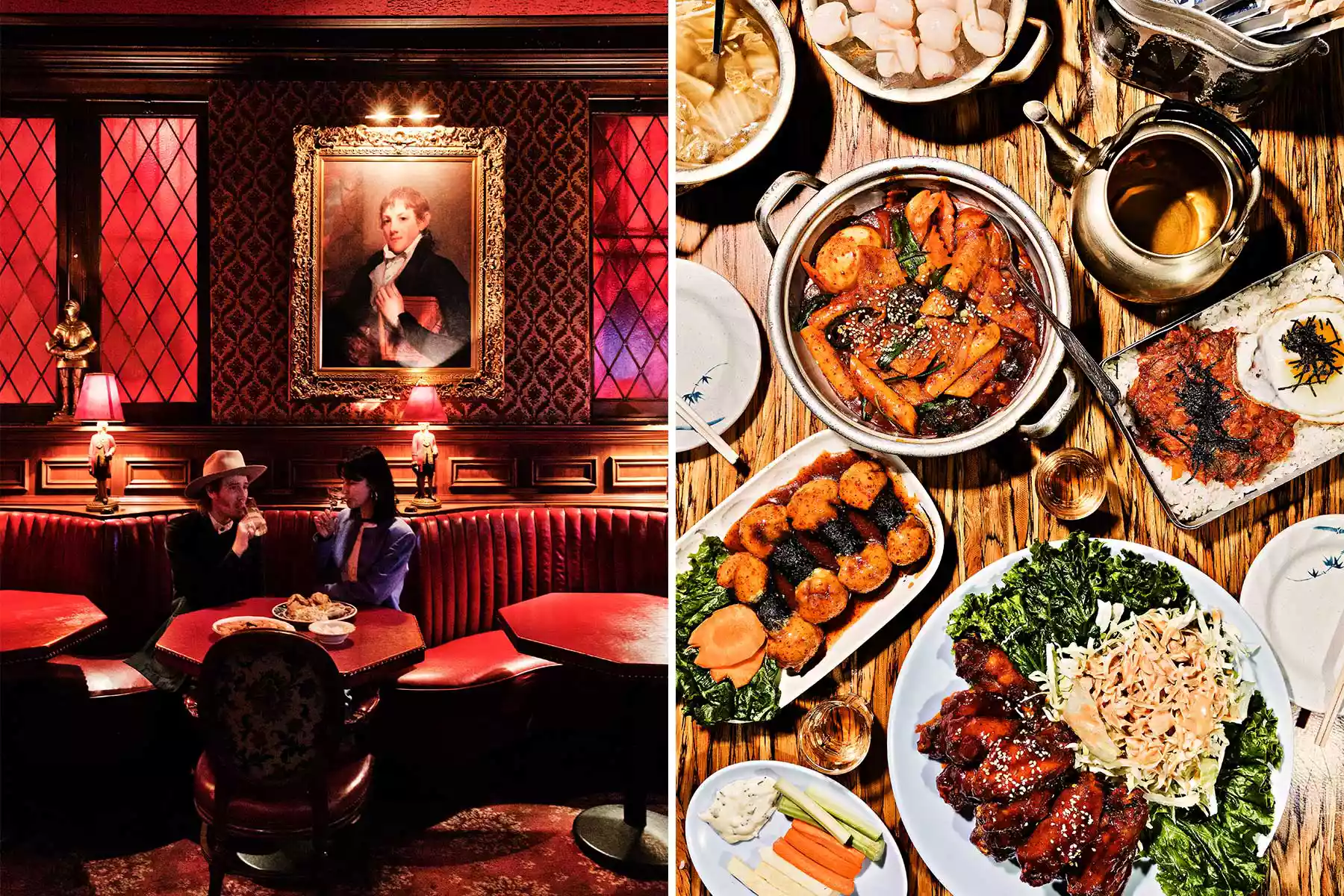1. Explore Los Angeles’ Koreatown: A Cultural Hub
2. The Evolution of Koreatown
3. Reviving the Culinary Scene Post-Pandemic
4. A Rich Tapestry of Cultures
5. The Importance of Community
6. Conclusion
In Los Angeles, Koreatown is alive with authentic food, contemporary culture, and a diverse, fiercely devoted community.
Late one night in November 2008, I stood outside Le Cercle, a club on Western Avenue in L.A.’s Koreatown. Next to me was a man I’d never met before, eating a burrito that smelled like heaven. I was 22 and imperiously drunk, and when I asked for a bite, he was too startled to say no. It turned out one bite was not enough, so I dragged my girlfriends to the taco truck parked in the Sizzler lot across the street. There we met the truck’s owner—a man we later learned was named Roy Choi. He was taking his new Kogi BBQ truck on its first weekend tour of Los Angeles.
Gone now: Le Cercle, my twenties, sharing food with strangers, the Sizzler. Here to stay: Korean tacos, the exuberance of youth, and the wonder of discovery in Koreatown, where change is rapid, exciting, heartbreaking, and constant.
The Evolution of Koreatown
Koreatown received official recognition from Los Angeles County in 1980, thanks in large part to the efforts of Hi Duk Lee. Lee was an entrepreneur and community leader who established the neighborhood as a “Second Seoul” for the wave of Koreans who moved to L.A. after the Immigration and Nationality Act of 1965, which lifted the restrictive quota system based on national origin. Lee opened a cluster of businesses around Olympic Boulevard and Normandie Avenue in the 1970s—including VIP Palace, one of the first Korean restaurants in town. He had it built in a traditional architectural style, with imported blue tiles.
Today, Los Angeles has the largest ethnic Korean population outside of Korea itself, and our Koreatown is the diaspora’s flagship neighborhood. Scribbled over and across every block in the neighborhood is hangul, the Korean alphabet, announcing restaurants and coffee shops, dry cleaners and florists, grocery stores and test-prep schools and karaoke bars.
VIP Palace has been closed for decades, but the building still stands, its orange façade stenciled with depictions of chickens, children, and a man playing an accordion by members of Lapiztola, a Oaxacan art collective. Since 2001, the space has been home to Guelaguetza, a family-owned Oaxacan-Angeleno restaurant. It has become a pillar of community tradition.
Reviving the Culinary Scene Post-Pandemic
Before the COVID pandemic, Guelaguetza was a spacious, bustling indoor restaurant with a full bar, showcasing a world-class mezcal list and live music acts. Now it has reduced capacity and no music, but there’s a breezy, cheerful patio in what used to be a parking area. Guelaguetza is best known for its moles—rich sauces made with complex blends of ingredients, many of them sourced directly from Oaxaca. Customers are eager to enjoy Oaxacan cooking once more.
However, the pandemic stretched on too long for many Koreatown restaurants, with assistance often falling short. Some beloved establishments could not survive the harsh economic realities posed by lockdowns.
A Rich Tapestry of Cultures
Koreatown is much more than an ethnic enclave. It’s the most densely populated neighborhood in L.A. County, with around 120,000 residents packed into its 2.7 square miles. The cultural mix drives Koreatown’s unique energy, evidenced by diverse culinary offerings and vibrant community events. The area’s popularity continues to draw visitors seeking an authentic experience.

The social fabric of Los Angeles is woven thick and knotty in Koreatown, where the city’s promises and failures are amplified. Visitors can immerse themselves in the local culture, savoring world-renowned dishes and enjoying the lively bar and restaurant scene.
The Importance of Community
Moreover, the community spirit continues to thrive in Koreatown. Local arts and galleries provide a platform for emerging and established artists, fostering connections among residents and visitors alike. This vibrant space embraces inclusivity and solidarity.
With resilience, Koreatown stands as a testament to its diverse heritage and an embrace of what makes this neighborhood uniquely Los Angeles. Whether you’re dining at a beloved local spot or exploring colorful art, there’s always something to discover.
Conclusion
Koreatown represents the heart of Los Angeles—a bustling, lively microcosm of cultures and experiences. It showcases the importance of community through its rich food scene, artistic expressions, and vibrant nightlife. As residents and businesses adapt to changing times, Koreatown remains a beacon of resilience and cultural pride.





